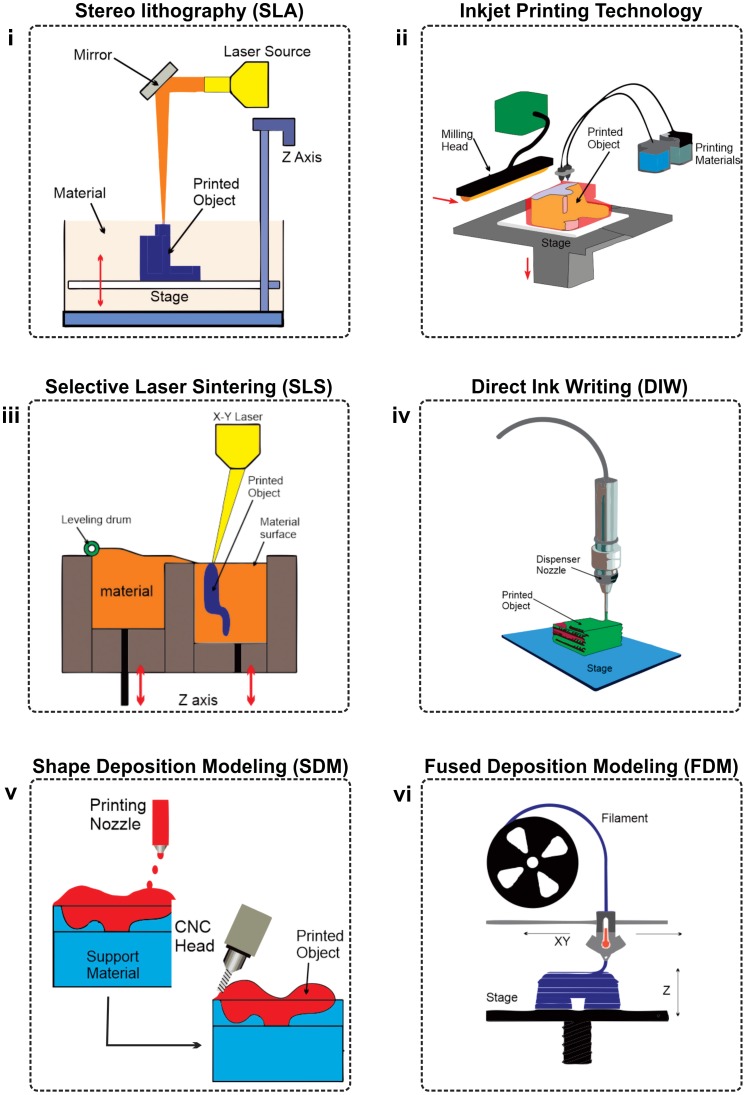Figure 3.
3D Printing techniques used to fabricate soft robots. (i) A liquid resin is selectively photo-polymerized in the process of SLA by a laser. (ii) Inkjet printing is similar to SLA in many ways with a difference that a movable inkjet head is used in this technique to apply a photopolymer being activated by a UV lamp. (iii) The powder of metal material is rolled across a build platform and a laser is directed into the powder followed by rolling the powder over the top of as-deposited layer and this process keeps on repeating till the desired 3D object is completely fabricated. (iv) DIW is an alternative printing technique to FDM for additive manufacturing of desired objects under ambient conditions in which ink passes through a nozzle in a controlled manner. (v) Shape deposition modelling technology consists of several steps including deposition. The material in heterogeneous deposition is changed between each deposition process. (vi) Soft materials are printed in the form of a continuous filament in FDM method with a single layer being deposited at a time.

